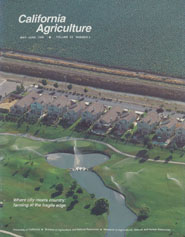All Issues

Where city meets country: farming at the fragile edge
Cover:
The Discovery Bay development in Contra Costa County was initially approved for 3,600 homes. In 1996 the county approved an additonal 2,000 units. The western edge of the development borders agricultural land. Photo by Jack Kelly Clark
May-June 1998
Volume 52, Number 3
Volume 52, Number 3





